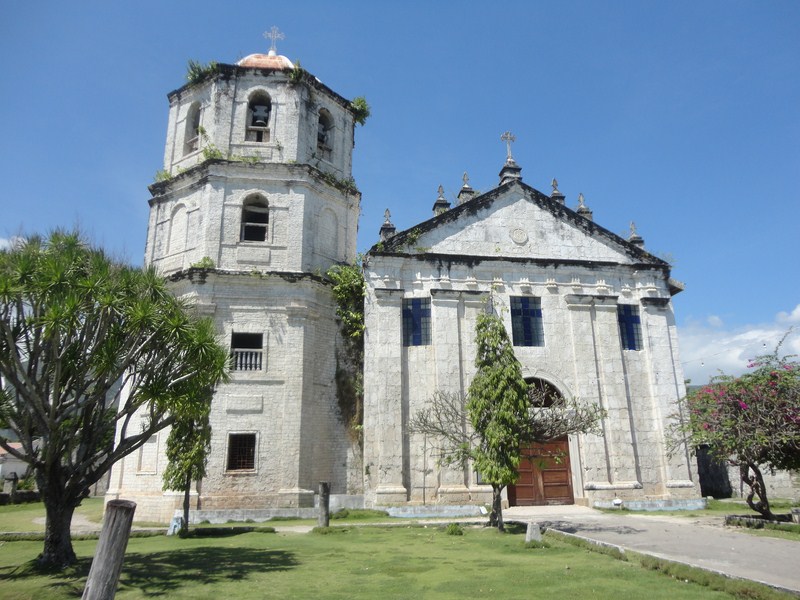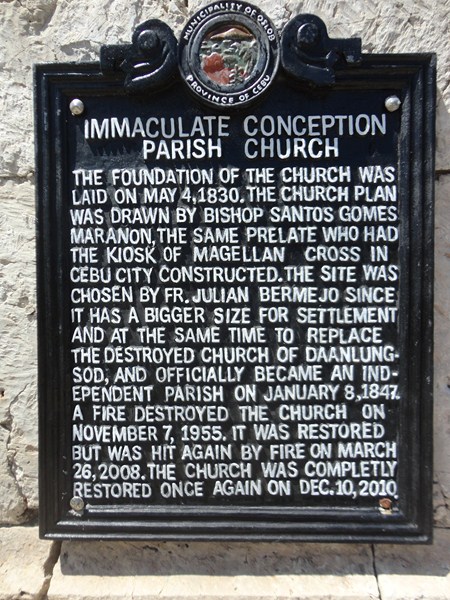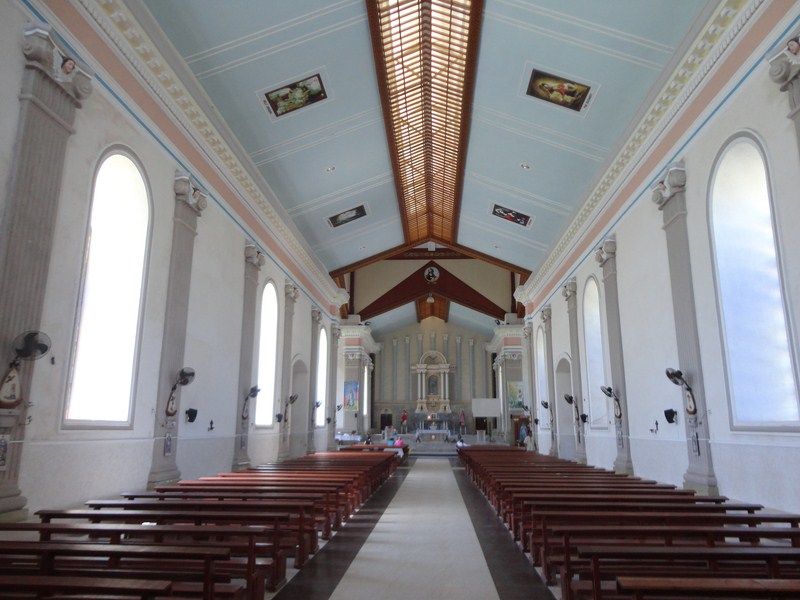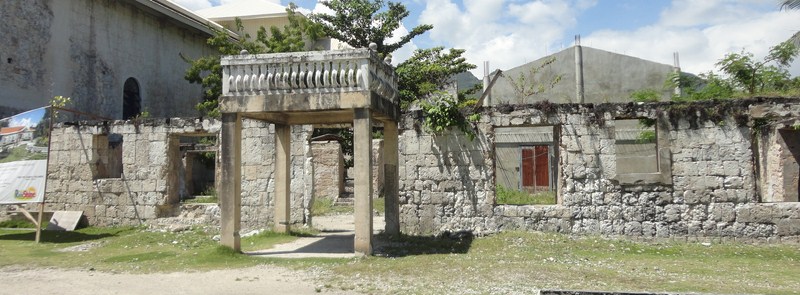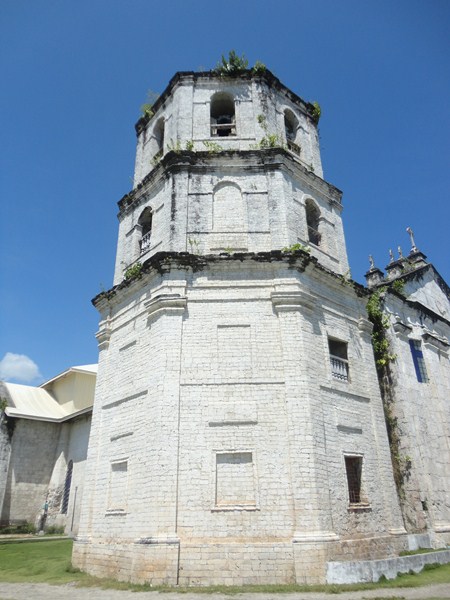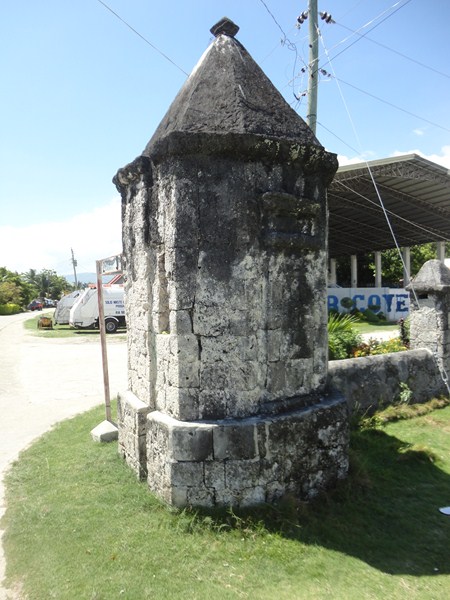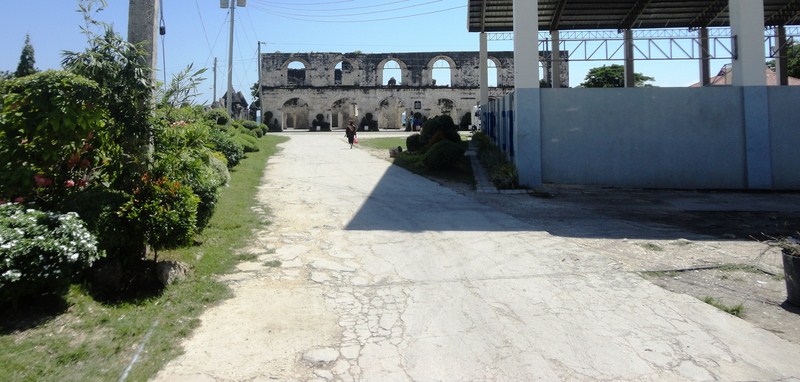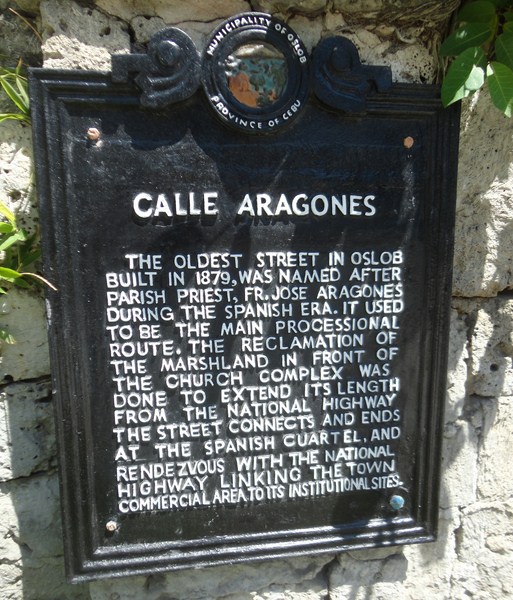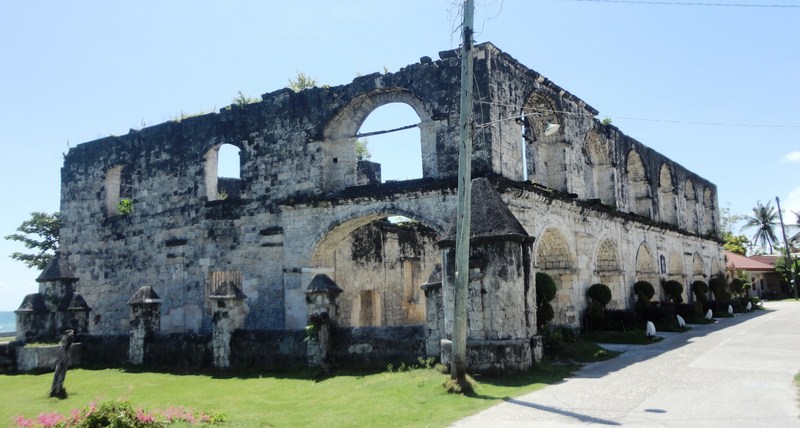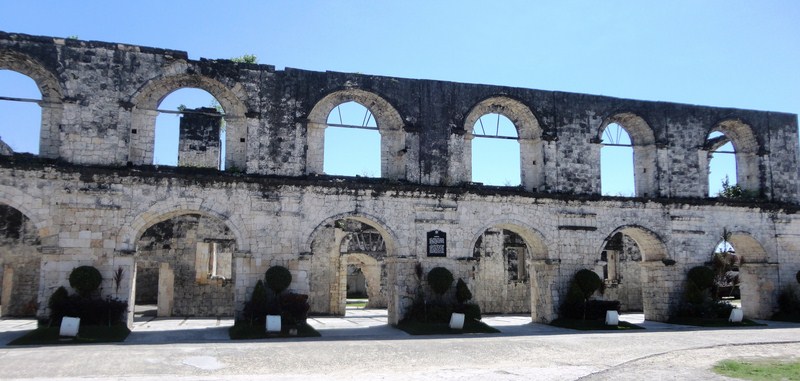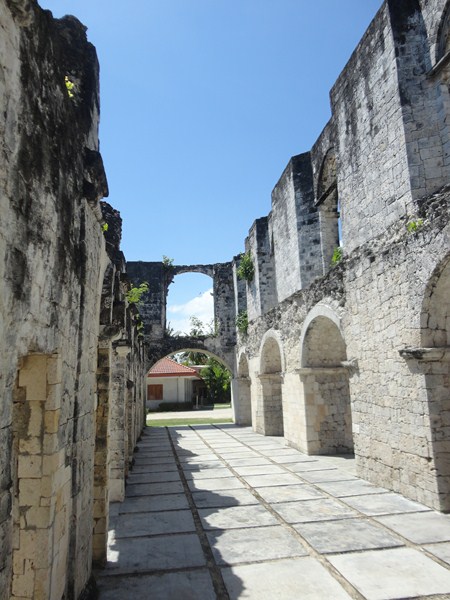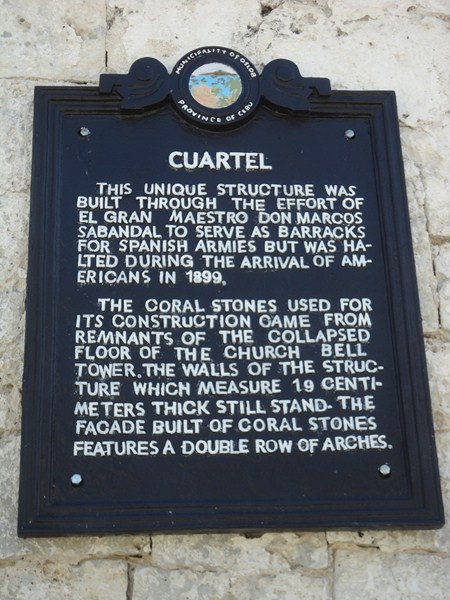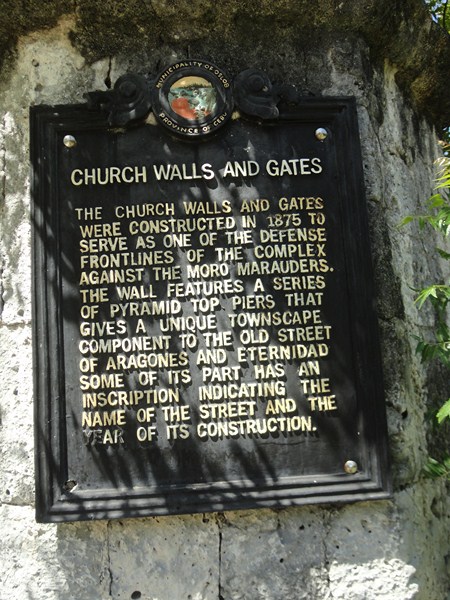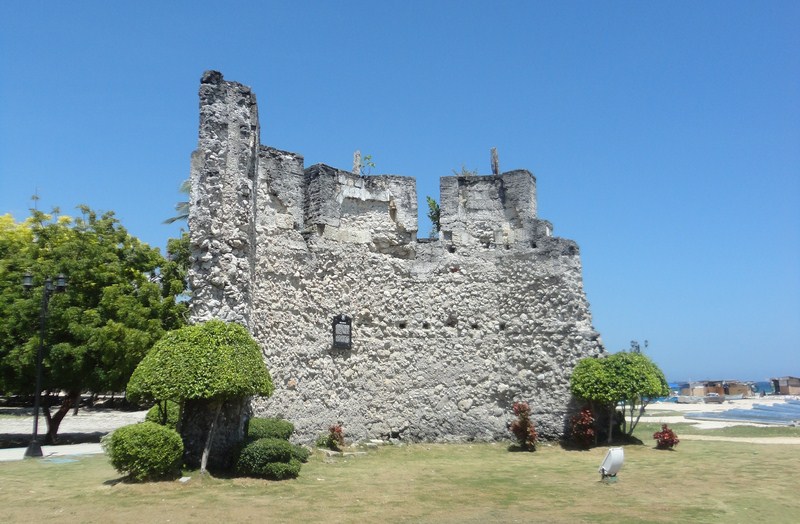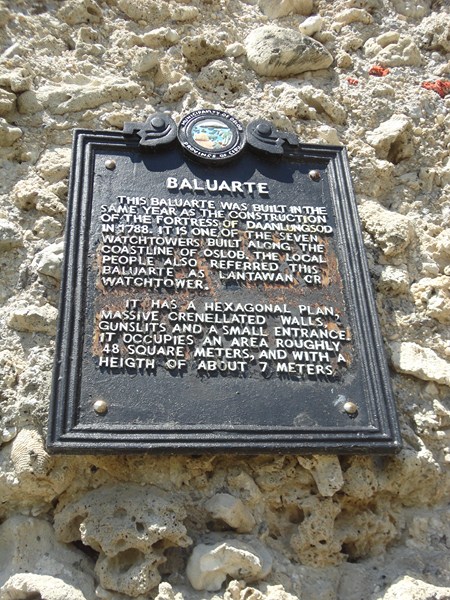From Tumalog Falls, we again boarded our airconditioned van for the short trip to the town proper of Oslob. Within its Municipal Heritage Park are a number of Spanish-era structures and at the center of it all is the town’s massive Church of Our Lady of the Immaculate Conception (Nuestra Señora de la Inmaculada Conception).
The church was designed by Bishop Santos Gomez de Marañon (the same prelate who built the kiosk of Magellan’s Cross in Cebu City) to replace the destroyed church at Daanglungsod (Boloc-Boloc). It cornerstone was laid by Fr. Julian Bermejo on May 4, 1830. Townspeople from neighboring Tañon (now Santander) and Ivisan (now Nueva Caceres, Oslob) helped in its construction. The church was finished in 18 years and blessed by Bishop Romualdo Ximeno in 1847.
The bell tower on the church’s left was built by Fr. Apolinar Alvarez in 1858 and Fr. Gregorio de Santiago Vela installed 11 bells at the fifth storey in 1894. The bells were transferred to the fourth storey when the fifth was destroyed during a strong typhoon. The bell tower was later repaired by Fr. Mauricio Alvarez (who also built the cemetery, municipal tribunal and the municipal church and made known the medicinal uses of the sulfuric waters of Mainit springs).
The convent on the right was started by Fr. Julian Bermejo. The church was finished and reinforced with solid buttresses from 1848 to 1850 by Fr. Juan Jose Aragones, Oslob’s first parish priest (1848–1854 and 1859–1861) and later Bishop of Nueva Segovia. It was renovated by Fr. Constantino Batoctoy in 1977. The roof, made of tejas sourced out and baked locally at a place now known as Lulukhan, were replaced with corrugated iron sheets by Fr. Pablo Alaxa in 1932. The church was totally burned by Cebuano guerillas in 1942 and, later on, the vault and dome fell. In 1954, the wooden flooring of the church was replaced with baldoza tiles.
Fire of unknown origin gutted the complex on November 7, 1955 leaving only the masonry walls of both buildings. It was restored, with the cooperation of the townspeople, by Fr. Benedicto Zapra and completed in 1980 by Fr. Constantino Batoctoy in time for the sesquicentennial celebration of the original church’s construction (1830 to 1980). A 2.5-hour (1:40-4 AM) fire again hit the church and adjacent convent on March 26, 2008 but spared the icon of Our Lady of Immaculate Conception, which is inside a glass case, and the 73 other icons near the door to the bell tower. The church was complete restored on December 10, 2010.
The church is 64 m. long, 15 m. wide, 9 m. high and has a simple, sober but attractive facade with a semicircular arched main entrance, rectangular widows, half-embedded pilasters and a triangular pediment. The 4-storey, 30 m. high and octagonal bell tower has rectangular and semicircular arched windows alternating with blind ones. The dome is typically Neo-Classic.
In front of the church is a prayer room, also known as a waiting chapel, built in 1847. It was used as an isolation chamber for leprosy-afflicted patients. It has a pediment decorated with a relief of a human skeleton.
On the left side of the church is Calle de Aragones, the town’s oldest street, built in 1879. It was named after Fr. Juan Jose Aragones. At the end of the street, at the intersection of Calle Aeternidad, is the unique, unfinished cuartel.
The construction of this barracks for the Guardia Civil was started by el gran maestro Don Marcos Sabandal but was halted with the arrival of the Americans in 1899. The coral stones used in its construction of its 19 cm. thick walls came from the remnants of the floor of the collapsed church bell tower. Its façade features a double row of arches.
The thick coral stone walls and gates surrounding the church complex, called paril, are topped by a series of inverted, cone-shaped stones. They were built in 1875 as a defense against raiding Muslim pirates.
Along Calle Eternidad, parallel to the coast, is a baluarte (a watchtower locally called lantawan), one of 7 built by the warrior-priest Fr. Julian Bermejo, parish priest of Boljo-on. Hexagonal in plan and occupying an area of 48 sq. m., it has massive 7 m. high crenellated walls. Only about a half of the watchtower remains. In 1813, this baluarte, as well as the other watchtowers, helped Fr. Bermejo and the townspeople of Oslob repel Moro slave raiders led by Sultan Goranding during a naval battle near the waters off Sumilon Island. Sultan Goranding was captured during the battle.
How to Get There: Oslob is located 117 kms. (a 3-hr. drive) south of Cebu City.

